- Prepare the Soil
- 1. Choose a well-drained location
- 2. Test the soil pH
- 3. Remove weeds and debris
- 4. Add organic matter
- 5. Loosen the soil
- 6. Incorporate fertilizer
- 7. Create raised beds or mounds
- 8. Mulch the soil
- Choose a Sunny Location
- Loosen the Soil
- Select the Right Varieties
- Consider Climate Conditions
- Choose Disease-resistant Varieties
- Start Seeds Indoors
- Use Quality Potting Mix
- Provide Adequate Light and Moisture
- 1. Light Requirements
- 2. Moisture Requirements
- Transplant Seedlings
- “Question-Answer”
- What is the best time to plant pepper seedlings in the open ground?
- How far apart should I space my pepper plants?
- Do pepper plants need full sun to thrive?
- What kind of soil is best for planting pepper seedlings?
- How often should I water pepper seedlings?
- Should I fertilize pepper plants after planting?
- “Video” How To Plant Peppers | Complete Guide to Transplanting and Fertilizing
When it comes to planting peppers in the open ground, there are several tips and tricks that can help ensure the survival rate of your seedlings reaches 100%. Peppers are a popular vegetable to grow in home gardens due to their versatility and delicious flavor. However, they can be sensitive to certain environmental factors, so it’s important to follow these guidelines to give your seedlings the best chance at thriving.
Choose the right location: Peppers thrive in warm, sunny locations with well-draining soil. Choose a spot in your garden that receives at least 6-8 hours of direct sunlight daily. Additionally, make sure the soil is rich in organic matter and drains well. Peppers prefer slightly acidic soil with a pH level of around 6.0-6.8.
Prepare the soil: Before planting your seedlings, prepare the soil by loosening it with a garden fork or tiller. Remove any weeds or debris and incorporate organic matter, such as compost or aged manure, to improve soil fertility and drainage. This will provide a healthy environment for the peppers to establish their roots and grow.
Plant at the right time: Peppers are warm-season crops, so it’s important to wait until the danger of frost has passed before planting them in the open ground. The soil temperature should be consistently above 60°F (15°C) for optimal growth. Typically, peppers can be planted outdoors in early to mid-spring, depending on your location and climate.
Prepare the Soil
Before planting peppers in the open ground, it is important to prepare the soil properly. This will provide the optimal conditions for seedling survival and growth. Here are some tips for preparing the soil:
1. Choose a well-drained location
Peppers thrive in well-drained soil, so choose a location that does not retain excessive moisture. This will prevent the roots from rotting and ensure proper oxygen supply to the plants.
2. Test the soil pH
Peppers prefer slightly acidic soil with a pH level of around 6.0 to 6.8. Test the pH of your soil using a pH testing kit or by sending a sample to a local agricultural extension service. If the pH is too low, add lime to raise it, or if it is too high, add sulfur to lower it.
3. Remove weeds and debris
Before planting, clear the area of any weeds, rocks, or other debris that may hinder the growth of the pepper plants. Weeds compete for nutrients and water, so removing them will give your peppers a better chance to thrive.
4. Add organic matter
Improve the soil’s fertility and structure by adding organic matter such as compost or well-rotted manure. This will enrich the soil with essential nutrients, improve drainage, and promote healthy root development.
5. Loosen the soil
Using a garden fork or tiller, loosen the soil to a depth of at least 12 inches. This will create a loose and friable texture, allowing the pepper roots to penetrate easily and access nutrients and water.
6. Incorporate fertilizer
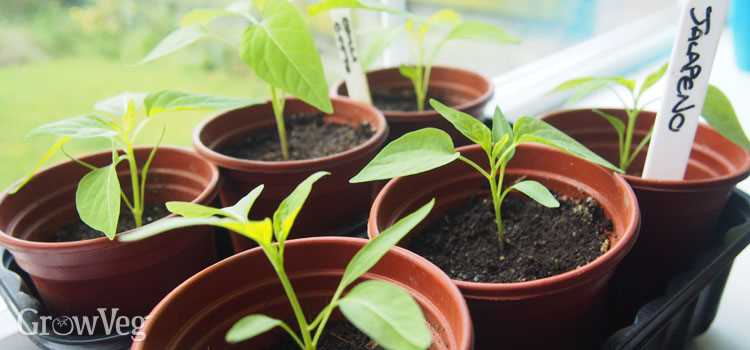
Before planting, mix a slow-release fertilizer or a balanced organic fertilizer into the soil. This will provide the initial nutrients for the seedlings and promote healthy growth throughout the growing season.
7. Create raised beds or mounds
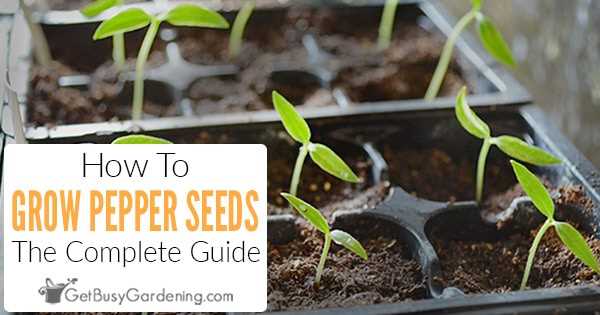
If your soil tends to be heavy or poorly drained, consider creating raised beds or mounds. This will improve drainage and prevent waterlogged conditions, which can be detrimental to pepper plants.
8. Mulch the soil
After planting the pepper seedlings, apply a layer of organic mulch around the plants. This will help conserve moisture, suppress weed growth, and regulate soil temperature, creating a favorable environment for the seedlings to establish.
By following these tips and preparing the soil properly, you can ensure the survival and healthy growth of your pepper seedlings in the open ground.
Choose a Sunny Location
When planting peppers in the open ground, it is important to choose a sunny location. Peppers love sunlight and thrive in warm, sunny conditions. Look for an area in your garden that gets at least 6-8 hours of direct sunlight each day.
An ideal spot for planting peppers would be an area that is sheltered from strong winds, as these can damage the plants. If possible, choose a location that is protected by a fence or other structures.
It is also important to consider the soil in the chosen location. Peppers prefer well-drained soil that is rich in organic matter. Avoid areas with heavy clay soil, as it can become waterlogged and cause root rot.
If your garden does not have a suitable location with full sun, consider using raised beds or containers to grow your peppers. These can be placed in the sunniest spot available, such as a patio or balcony.
By choosing a sunny location for your pepper plants, you will provide them with the optimal growing conditions for healthy growth and abundant harvest.
Loosen the Soil
Before planting pepper seedlings in the open ground, it is essential to loosen the soil. This step is crucial as it allows the roots of the peppers to spread easily and establish a strong foundation. Here are a few tips on how to properly loosen the soil:
- Remove any weeds or debris: Prior to loosening the soil, make sure to remove any weeds or debris that may obstruct the process.
- Use a garden fork or a tiller: A garden fork or a tiller can be used to loosen the soil effectively. Start by inserting the fork or tiller into the ground and gently push it down to break up the compacted soil.
- Work the tool in a back-and-forth motion: Once the fork or tiller is inserted, work it in a back-and-forth motion, loosening the soil as you go. This will help to break up any clumps and create a loose texture.
- Remove large stones or rocks: While loosening the soil, be sure to remove any large stones or rocks that may hinder the growth of the pepper seedlings.
- Add organic matter: If the soil is lacking in nutrients, consider adding organic matter such as compost or well-rotted manure. This will not only improve the soil structure but also provide essential nutrients for the peppers.
By following these steps and properly loosening the soil, you can provide an optimal environment for your pepper seedlings to thrive and ensure a higher survival rate.
Select the Right Varieties
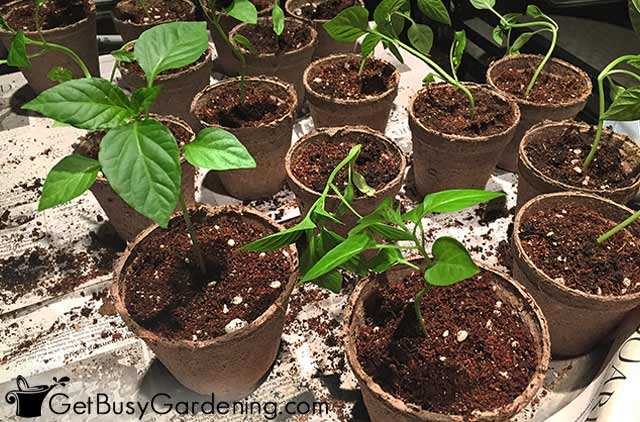
Choosing the right pepper varieties is crucial for successful planting in the open ground. Here are some factors to consider when selecting pepper varieties:
- Climate: Peppers are classified into different types based on their heat tolerance. Make sure to choose pepper varieties that are suitable for your climate. Some varieties are more cold-tolerant, while others thrive in hot and humid conditions. Pick varieties that can withstand the temperature extremes of your region.
- Growing season: Consider the length of your growing season when selecting pepper varieties. Some varieties have a longer growing season and require more time to mature, while others produce fruits more quickly. Select varieties that can fully ripen before the first frost in your area.
- Size and shape: Peppers come in various sizes and shapes. Determine if you prefer larger or smaller peppers and if you want them to be bell-shaped, elongated, or round. This will help you narrow down your options and find the varieties that match your preferences.
- Flavor and heat level: Different pepper varieties have varying flavor profiles and heat levels. Some peppers are mild and sweet, while others are spicy or even extremely hot. Decide what level of heat and flavor intensity you prefer and choose varieties accordingly.
By considering these factors, you can select the right pepper varieties that will thrive in your specific growing conditions and meet your taste preferences. This will increase the chances of successful planting and ensure a high survival rate for your pepper seedlings.
Consider Climate Conditions
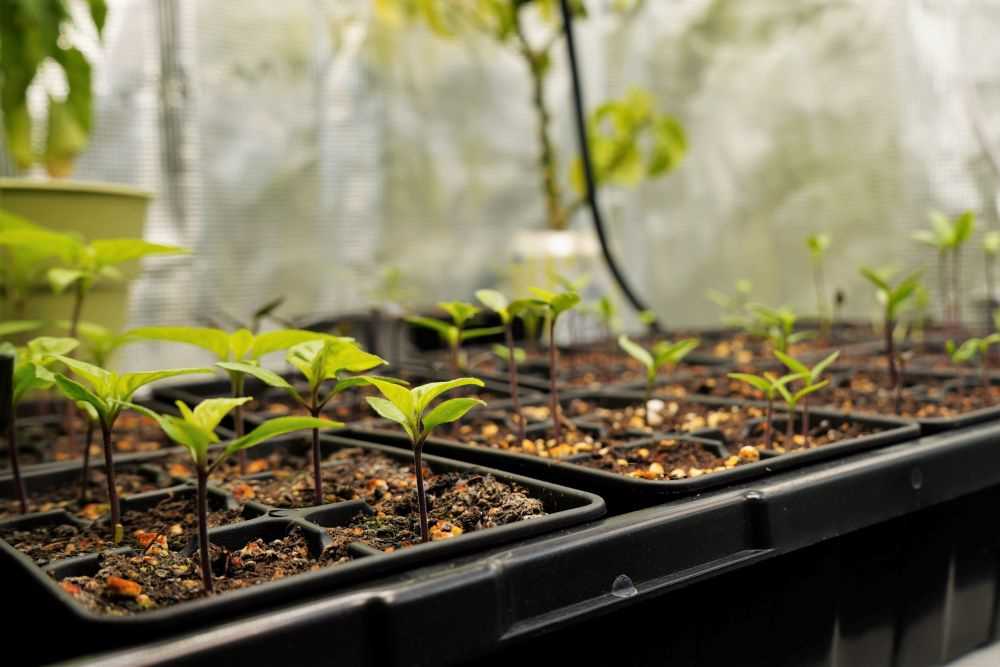
Before planting peppers in the open ground, it is important to consider the climate conditions of your region. Peppers thrive in warm and sunny climates, so it is best to plant them when the soil has warmed up and all danger of frost has passed.
In general, peppers prefer a temperature range of 75 to 85°F (24 to 29°C), so it is important to choose the right time to plant them. If you live in a region with a short growing season, you may want to consider starting your pepper seeds indoors and then transplanting them outdoors once the weather warms up.
Additionally, peppers require a minimum soil temperature of 60°F (15°C) for optimal growth. Make sure the soil has warmed up sufficiently before planting the seedlings to ensure their survival.
It is also important to consider the average amount of rainfall in your region. Peppers prefer well-drained soil and do not tolerate excessive moisture. If you live in an area with heavy rainfall, you may want to consider planting your peppers in raised beds or using row covers to protect them from excess moisture.
Furthermore, consider the length of your growing season. Peppers generally require 70 to 90 days from transplanting to harvest, so make sure your growing season is long enough to allow for this. If you live in a region with a shorter growing season, you can choose shorter maturing pepper varieties or consider using techniques like black plastic mulching to extend the growing season.
By considering the climate conditions of your region and taking appropriate measures, you can ensure the successful survival and growth of your pepper seedlings in the open ground.
Choose Disease-resistant Varieties
When planting peppers in open ground, it is important to choose disease-resistant varieties. This will help ensure the survival rate of seedlings and reduce the risk of plant diseases. Here are some tips on choosing disease-resistant pepper varieties:
- Research disease-resistant varieties: Before purchasing pepper seeds or seedlings, do some research on disease-resistant varieties. Look for varieties that are known to be resistant to common pepper plant diseases such as bacterial spot, powdery mildew, and verticillium wilt.
- Check seed catalogs or websites: Seed catalogs and websites often provide information on disease resistance for each variety. Look for varieties that have been specifically bred for their disease resistance.
- Choose hybrid varieties: Hybrid varieties are often bred for disease resistance. Look for varieties that have “F” or “FF” after their name, indicating resistance to specific diseases. For example, “F1” indicates resistance to Fusarium wilt.
- Consider regional diseases: Some pepper diseases are more common in specific regions. Research the diseases that are prevalent in your area and choose varieties that are resistant to those specific diseases.
- Use disease-resistant rootstocks: In addition to choosing disease-resistant pepper varieties, you can also use disease-resistant rootstocks. Grafting pepper plants onto disease-resistant rootstocks can help improve their overall disease resistance.
By choosing disease-resistant varieties and taking necessary precautions, you can increase the chances of your pepper seedlings surviving and thriving in the open ground.
Start Seeds Indoors
Planting pepper seeds indoors is a great way to get a head start on the growing season. By starting your seeds indoors, you can ensure that your seedlings are strong and healthy before transplanting them into the open ground.
Here are some tips for starting pepper seeds indoors:
- Choose the right containers: Use trays, pots, or seedling trays with drainage holes to plant your pepper seeds. Make sure the containers are clean and sterilized before use.
- Prepare the soil: Use a well-draining seed-starting mix or a combination of peat moss, vermiculite, and perlite. Moisten the soil before planting the seeds.
- Sow the seeds: Place 2-3 pepper seeds in each container, about 1/4 inch deep. Cover the seeds with a thin layer of soil and gently pat it down.
- Provide warmth: Peppers thrive in warm temperatures, so it’s important to provide a warm environment for your seedlings. Use a heating mat or place the containers on a warm surface, such as a refrigerator or radiator.
- Provide light: Pepper seedlings need plenty of light to grow strong and healthy. Place the containers in a sunny spot or use a grow light to provide artificial light for at least 12-14 hours a day.
- Water carefully: Keep the soil moist, but not wet. Overwatering can lead to damping off, a common fungal disease that affects young seedlings. Water from the bottom to avoid wetting the leaves.
- Thinning and transplanting: After the seeds germinate, thin the seedlings to one per container. When the seedlings have developed their true leaves and the weather has warmed up, usually after 6-8 weeks, they are ready to be transplanted into the open ground.
Starting pepper seeds indoors can give you a head start on the growing season and ensure a higher survival rate for your seedlings. Follow these tips for success, and soon you’ll be enjoying a bountiful harvest of delicious peppers.
Use Quality Potting Mix
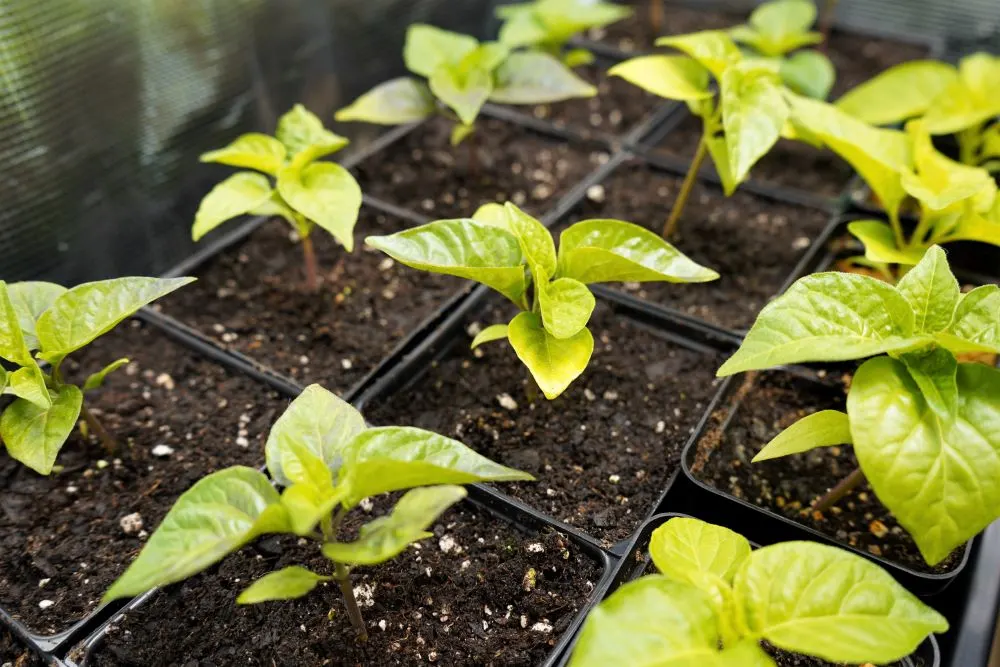
When planting peppers in the open ground, it is important to choose a quality potting mix. The potting mix serves as the growing medium for your pepper seedlings and plays a crucial role in their survival and growth.
Here are some tips for selecting and using a quality potting mix:
- Choose a well-draining mix: Peppers prefer well-draining soil to prevent waterlogged roots. Look for a potting mix that contains ingredients like perlite or vermiculite, which help improve drainage.
- Check the pH level: Peppers prefer slightly acidic soil with a pH level around 6.0-6.8. Make sure the potting mix you choose has a pH level within this range.
- Look for a mix with added nutrients: Peppers are heavy feeders and require plenty of nutrients for healthy growth. Look for a potting mix that contains added organic matter, such as compost or aged manure, to provide nutrients to your plants.
- Avoid mixes with chemical additives: Some potting mixes may contain chemical additives or synthetic fertilizers that can be harmful to your plants. Opt for organic or all-natural potting mixes to ensure the health and safety of your peppers.
Using a quality potting mix will provide your pepper seedlings with the best possible start and increase their chances of survival in the open ground. Remember to water your plants regularly and monitor their progress to ensure optimal growth.
Provide Adequate Light and Moisture
Providing adequate light and moisture is crucial for the survival and healthy growth of pepper seedlings. Here are some tips on how to ensure the right amount of light and moisture for your pepper plants:
1. Light Requirements
- Pepper plants require at least 6-8 hours of direct sunlight per day.
- Choose a location for planting that receives full sun exposure, away from tall trees or buildings that may cast shadows on the plants.
- If growing peppers indoors, use fluorescent grow lights or special plant lights to supplement natural sunlight.
- Position the grow lights about 6-12 inches above the seedlings and adjust the height as the plants grow to maintain proper light intensity.
2. Moisture Requirements
- Pepper plants prefer a moist, well-drained soil. It is important to keep the soil evenly moist, but not waterlogged.
- Water the seedlings deeply, providing enough moisture to thoroughly saturate the root zone.
- Avoid overwatering, as it can lead to root rot and other issues. Allow the top inch of soil to dry out slightly between waterings.
- Using a layer of organic mulch around the plants can help conserve moisture and prevent weed growth.
- Monitor the moisture levels regularly and adjust the watering frequency depending on the weather conditions.
By providing adequate light and moisture, you can help your pepper seedlings to establish strong root systems, develop healthy foliage, and increase their chances of surviving and thriving in the open ground.
Transplant Seedlings
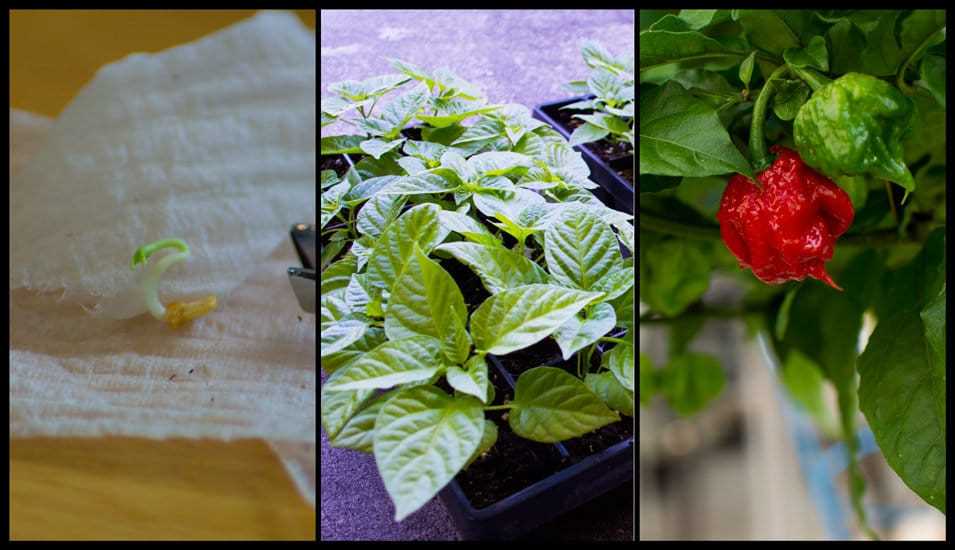
After your pepper seedlings have developed their second set of leaves (usually around 4-6 weeks after sowing), it is time to transplant them into the open ground. Transplanting seedlings can be a critical step in ensuring their survival and healthy growth.
Choose the right time: Transplant your seedlings when the soil temperatures have warmed up and there is no risk of frost. Peppers are warm-season plants and prefer to be grown in temperatures above 60°F (15°C).
Prepare the planting site: Choose a location that receives full sun (at least 6-8 hours of direct sunlight per day) and has well-drained soil. Till the soil to a depth of 8-10 inches and remove any weeds or grass from the area.
Harden off the seedlings: Before transplanting, it is important to gradually acclimate your seedlings to the outdoor conditions. Start by placing them outside in a sheltered location for a few hours each day, gradually increasing the time over a period of 7-10 days.
Transplant the seedlings:
- Dig a hole that is slightly larger than the size of the seedling’s root ball. Make sure to space the holes according to the recommended spacing for the particular pepper variety you are planting. Generally, pepper plants should be spaced around 12-18 inches apart.
- Carefully remove the seedling from its container, taking care not to damage the delicate roots. Gently loosen the root ball if it is tightly bound.
- Place the seedling in the hole and backfill with soil, firming it gently around the base of the plant. Make sure the plant is at the same depth as it was in the container, with the soil level just below the lowest set of leaves.
- Water the newly transplanted seedlings thoroughly, making sure the soil is evenly moist. This will help the roots establish and prevent any transplant shock.
Provide support: If you are growing larger pepper varieties or expect your plants to bear heavy fruit, it is important to provide support such as stakes or cages. This will help prevent the plants from bending or breaking under the weight of the peppers.
Mulch and water: After transplanting, apply a layer of organic mulch around the pepper plants to help retain moisture and suppress weed growth. Water the plants regularly, keeping the soil evenly moist but not waterlogged.
Monitor and protect: Keep an eye on your transplanted seedlings and watch out for any signs of pests or diseases. Protect them from extreme weather conditions, such as high winds or heavy rainfall, by providing temporary shelter if needed.
By following these steps, you can ensure a successful transplanting process for your pepper seedlings and increase the chances of their survival and productivity in the open ground.
“Question-Answer”
What is the best time to plant pepper seedlings in the open ground?
The best time to plant pepper seedlings in the open ground is after the last frost date has passed. This is usually in late spring or early summer.
How far apart should I space my pepper plants?
It is recommended to space pepper plants about 18-24 inches apart. This will provide enough room for the plants to grow and develop without crowding each other.
Do pepper plants need full sun to thrive?
Yes, pepper plants require full sun to thrive. They need at least 6-8 hours of direct sunlight each day to grow and produce fruit. Planting them in a sunny location will ensure optimal growth and yield.
What kind of soil is best for planting pepper seedlings?
Pepper plants prefer well-draining soil that is rich in organic matter. A sandy loam soil is ideal, as it holds moisture well but also allows excess water to drain away. Adding compost or aged manure to the soil before planting will improve its fertility and texture.
How often should I water pepper seedlings?
Pepper seedlings should be watered regularly, especially during hot and dry weather. It is important to keep the soil consistently moist but not waterlogged. Watering deeply once or twice a week is usually sufficient, but the frequency may vary depending on the weather and soil conditions.
Should I fertilize pepper plants after planting?
Yes, it is recommended to fertilize pepper plants after planting to provide them with the necessary nutrients. A balanced fertilizer, such as a 10-10-10 or 14-14-14, can be applied according to the package instructions. It is best to apply the fertilizer when the plants are actively growing.







